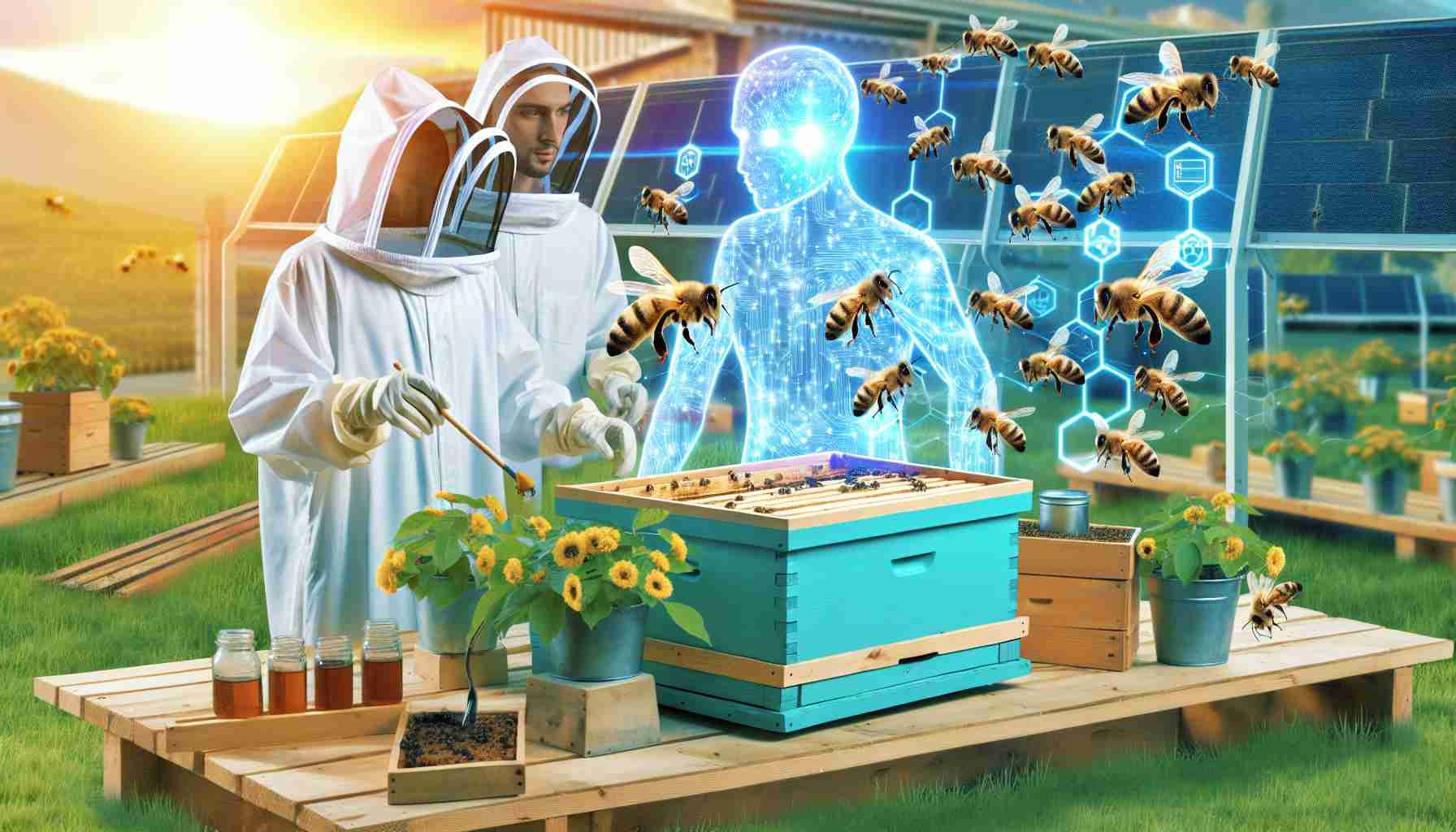Apples and avocados, bell peppers and tomatoes, are just a few of the many crops that rely on bees for pollination to survive. However, bees are dying at an alarming rate, posing a threat to future food security.
According to Friends of the Earth, the largest environmental organization operating in 73 countries, the future survival of bees on the planet is not guaranteed. In 2020 alone, nearly 46% of bee colony populations were lost, and there has been a drastic decline in wild bee populations.
Eliyah Radzyner, a beekeeper with decades of experience, decided to take action against this problem. Drawing on his vast beekeeping knowledge, Radzyner invited his friend, entrepreneur Saar Safra, to collaborate on creating an AI-powered beehive.
Together, they developed Beewise, a robotic beehive that monitors the insects 24/7 using video cameras and temperature sensors to help understand what is killing the bees.
“You can truly know if there’s a disease or if the bees are hungry, and AI sees all of that,” says Saar Safra in an interview with NoCamels.
The solar-powered beehive has openings on all sides for bees to freely enter and exit. The hive itself is a box-shaped structure that can accommodate 10 completely separate bee colonies at once.
To relocate the bees from the original hive to the new AI-controlled hive, frames of honeycomb are placed in the new location along with the queen bee, and the rest of the hive follows automatically.
According to Safra, it takes a few hours for the bees to acclimate to their new location, but once they do, they are fully adapted.
The AI gradually identifies how the bees behave as a colony inside the hive. The automated system can feed the bees and, if necessary, administer medication. Both of these functions are carried out by the hive’s robotic arm, which is also AI-controlled. If there is a shortage of food or medication, the algorithm alerts the beekeepers, and if a predator manages to enter the hive, the arm can drive it away.
The beehive can accommodate 10 bee colonies simultaneously. The AI system also controls all other robotic mechanisms of the hive, including cameras and sensors. When beekeepers know that pesticides, one of the main causes of bee deaths, are being used in the area, the openings are completely closed to ensure the insects’ safety.
According to Safra, AI has a 99.98% effectiveness in taking care of the bees by administering medication, controlling temperature, and providing food.
Nevertheless, he states that the AI platform is still unable to prevent a small number of bee deaths, as about 8% of the hive population naturally dies each year.
The system is not completely human-free. Bees still produce honey, which needs to be harvested, and the owners of the AI hive use the same method as with a traditional wooden hive: They remove the outer panels, take out the honeycomb frames, and manually collect the honey.
According to Safra, the most important part of the Beewise project is the continuous monitoring of the bees to detect any potential issues at an early stage.
“During beekeeping procedures, beekeepers either come too late or don’t know what to do to protect the bees,” he says.
Beewise is already available in the United States (the largest market), Israel, and the United Arab Emirates, and its revenue is supplemented by venture capital funding.
Safra hopes that the company will continue to grow until traditional wooden hives are no longer needed, which he believes will happen in the near future.
“We don’t want to change the world of beekeeping; we just want to make it easier for these honey producers,” he assures.
FAQ
1. Why are bees important for the survival of certain crops?
Bees are crucial for pollinating many plants, such as apples, avocados, bell peppers, and tomatoes. Without their role as pollinators, these crops cannot reproduce and survive.
2. What are the threats to the future survival of bees?
According to Friends of the Earth, bee colony populations are decreasing significantly, and wild bee populations are also declining.
3. How does Beewise, the robotic beehive, work?
Beewise is an AI-powered beehive that monitors insects 24/7 using video cameras and temperature sensors. It is powered by solar energy and has openings for bees to enter and exit. The beehive can accommodate 10 bee colonies simultaneously.
4. How are bees relocated to AI-controlled hives?
Frames of honeycomb with the queen bee are transferred to the new hive, and the rest of the bees follow automatically.
5. How does AI help in caring for bees in the beehive?
AI identifies the behavior of the bee colony, monitors temperature, feeds the bees, and administers medication. If there is a shortage of food or medication, the algorithm alerts beekeepers. The robotic arm of the hive also drives away predators.
6. Can Beewise completely stop bee deaths?
Although Beewise has a high effectiveness in caring for bees, it cannot completely prevent the natural death of approximately 8% of the hive population that occurs annually.
7. Do the managers of the AI beehive need to manually collect honey?
Yes, the owners of the AI beehive still need to manually collect honey. However, the process of monitoring the bees is made easier.
8. Where is Beewise available?
Beewise is already available in the United States, Israel, and the United Arab Emirates.
9. How does Beewise plan to expand?
Beewise hopes to grow until traditional wooden hives are no longer needed. They aim to make beekeeping easier for beekeepers.
The source of the article is from the blog papodemusica.com
